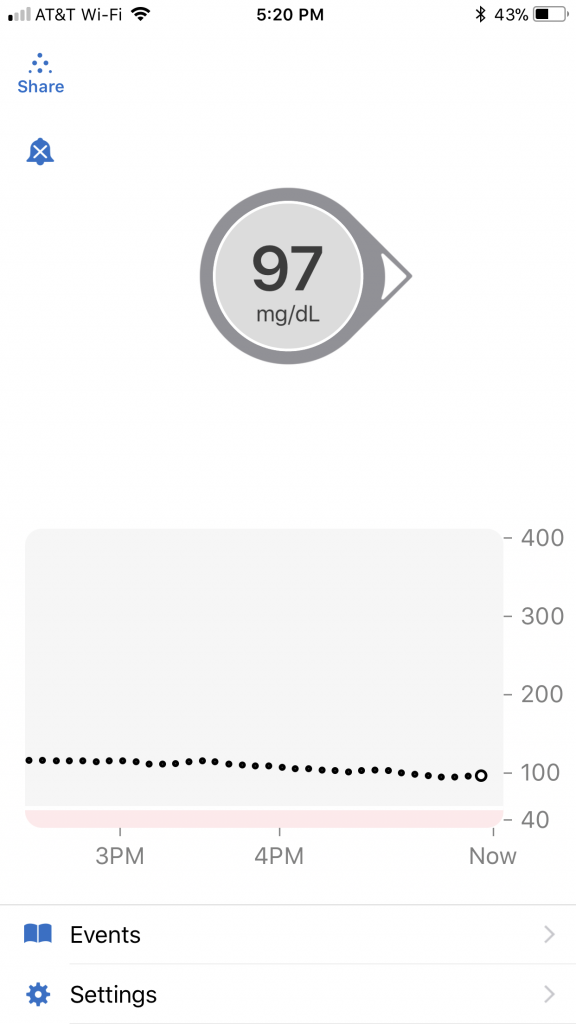
Before I was diabetic, I never cared what my blood sugar was. I barely knew what it was, except when people would say “Whew! I’m about to faint I better eat something, my blood sugar is low!” Whether their blood glucose was actually low, we will never know. As a type one diabetic I now wear a Continuous Glucose Monitor (CGM) made by the nice folks at Dexcom right here in San Diego. This device is a transmitter connected to a small flexible needle that sits in my skin and transmits readings to my phone via bluetooth, giving me readings like this:
“When performance is measured, performance improves. When performance is measured and reported back, the rate of improvement accelerates.” – Thomas S. Monson
Once you have this data it’s almost impossible not to pay attention, at least for me. Anything I eat – low carb or not – has an impact on my blood glucose and it’s pretty interesting to watch. I of course have to watch because I need to make sure I am taking enough exogenous insulin to prevent hyperglycemia, but it should be interesting to non diabetics as well.
Now I’ve read some things since becoming diabetic like Dr. Bernstein’s The Diabetes Solution, and lurk around on the diabetes subreddit so I’ve been lead to believe that the fasting blood glucose of a non-diabetic should be 83-87 mg/dL and never over 100. But what about when they eat? What happens to their blood sugar then?
There’s a Type one in San Diego who made a pretty good video of him (he eats low carb and wears a dexcom) and his friend (non-diabetic, wears dexcom for the purposes of this video) and it gives you a pretty good idea of what a functional pancreas looks like through a CGM:
